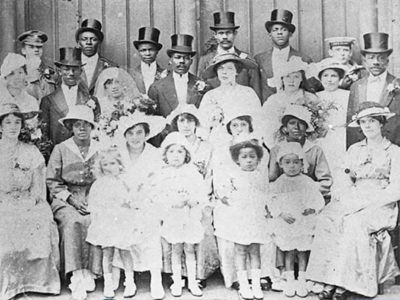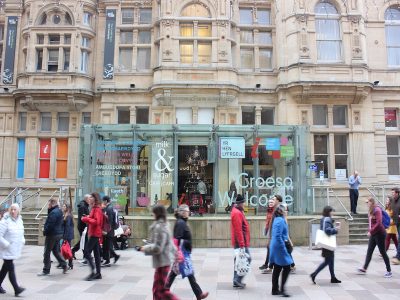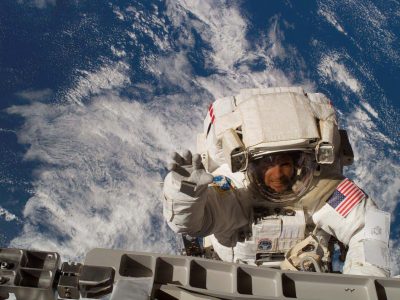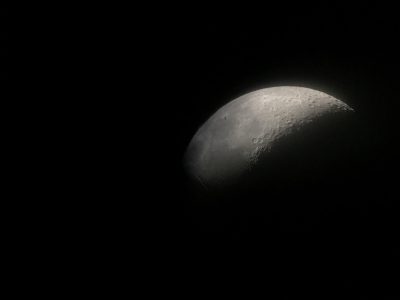Cindy’s selection of the museum store’s most impressive fossils:
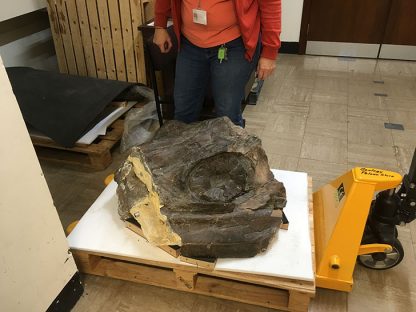
Giant ichthyosaur skull, UK
“We like to bring this one out for visitors because it’s so visually striking”.
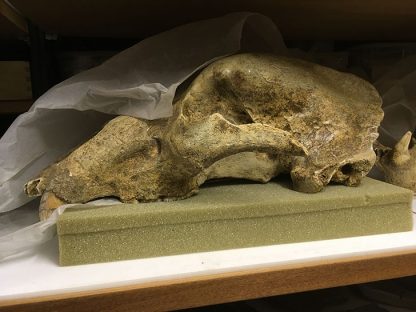
Cave bear skull, Italy
“We keep some of our larger items on these shelves – they’re a little too big to fit in a box.”
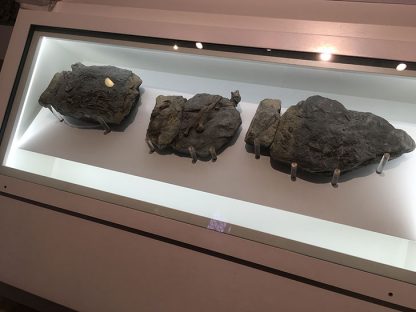
Dracoraptor, Wales
“This one was only discovered in 2014, and in the Vale of Glamorgan too. They named it ‘dragon-raptor’ due to the Welsh background. We think it was just a juvenile, though.”
On displaying fossils to the public:
Cindy believes: “You’ve got to take people and give them a visual picture before you start giving them the facts. If we’re giving people a tour, they’re only going to remember three or four facts – they might remember that it was 500 million years ago, but they won’t remember what it was. They’ll remember they were at the bottom of the sea, or in a hot, sandy desert; it’s feelings rather than facts or figures. Especially with groups of children, you’ve got to say ‘right, line up and spread out, and that’s how big this dinosaur is.’”
The National Museum’s palaeontology curator talks about daily life in the department, displays, and of course, dinosaurs.
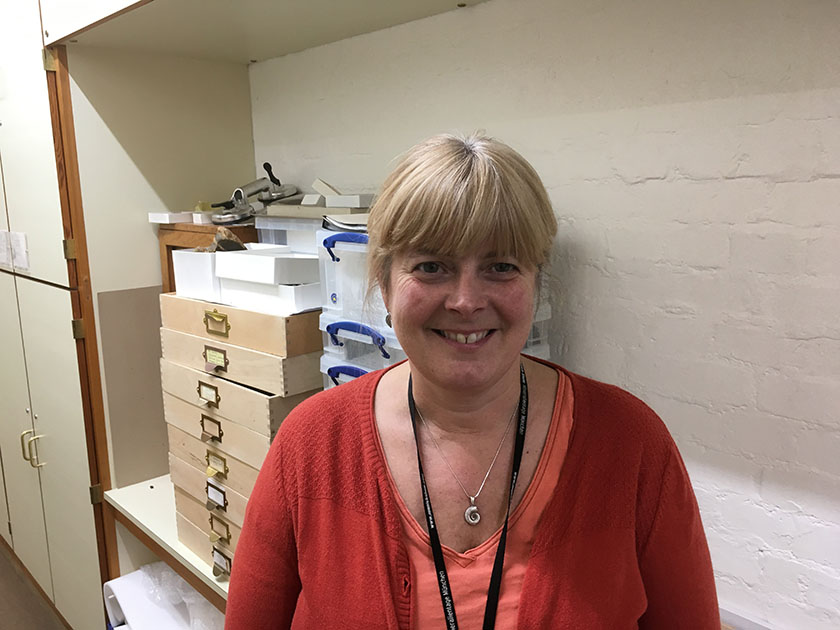
Cindy Howells, 54, Palaeontology Curator at the National Museum of Wales.
It’s half term at Cardiff’s National Museum. Children are everywhere, wide-eyed with excitement at the sight of towering reptiles which don’t so much seize their imaginations as acquire the title deeds. For many, the intrigue of dinosaurs wears off within a few years; but for Cindy Howells, the museum’s curator of palaeontology, it has never left.
“I think it was seeing the Natural History Museum that did it for me,” she says thoughtfully. “We had an annual trip, and I loved seeing the fossils and the cases each time.”
The teacher you always wanted to have but never did, Cindy (54), is one of the friendliest and most affable people you could ever wish to meet. Her enthusiasm for the subject is infectious, matched only by her love of orderliness.
“I’m a born curator,” she says happily, “I’m the sort of person who’ll put books on the shelf by matching all the reds or all the greens – and naturally in alphabetical order, of course.”

“Any collections within the museum are the initial building blocks that underlay all our science,” says Cindy. It’s therefore imperative that the building blocks don’t go missing.
Changing times
Originally from Guildford, Cindy was first drawn to the field of palaeontology because it took science out of the lab and into the outdoors. It’s an exciting way to conduct research – albeit with a higher potential for destruction. On one such occasion, the curator herself was responsible for bringing a fossil simultaneously into and out of existence.
Looking back, she can at least see the funny side: “It wasn’t too bad, but imagine we’ve discovered a new dinosaur bone that we didn’t know in an area that wasn’t supposed to have anything in it and you’ve smashed it. So that was fun.”
“There was no paperwork, no performance indicators – it was brilliant!”
She began working at the museum as a volunteer, followed by two years in manpower services before she was finally offered a permanent job there. 32 years on, and it’s fair to say she’s at the heart of the department, having brought the Dinosaur Babies exhibition to the city earlier this year.
However, with the mounting number of legal procedures, Cindy can’t help but long for simpler times. “It’s still good now, but in the early days you could just walk in off the galleries as a volunteer after lunch and get on with your stuff down here,” she wistfully recalls. “There was no paperwork, no performance indicators, no targets… ah, it was brilliant!”
See some of Cindy’s favourite fossils below:
No stone unturned
In an ironic twist of fate, Cindy’s role as curator means that she spends much of her time engaging with the public and planning for exhibitions, rather than actually going fossil-hunting. It’s a situation that she tries to remedy outside of work.
“I do go out into the field for fun,” she laughs. “My partner’s a palaeontologist as well, so we can’t really go anywhere without looking for fossils!”
Her proudest find to date was the discovery of an entirely new species of prehistoric sea lily down the coast in Pembrokeshire.
“I had a hand in writing the paper and naming it; so although it isn’t named after me, my name will forever be there as a primary author” she beams.
Cindy’s selection of the museum store’s most impressive fossils:

Giant ichthyosaur skull, UK
“We like to bring this one out for visitors because it’s so visually striking”.

Cave bear skull, Italy
“We keep some of our larger items on these shelves – they’re a little too big to fit in a box.”

Dracoraptor, Wales
“This one was only discovered in 2014, and in the Vale of Glamorgan too. They named it ‘dragon-raptor’ due to the Welsh background. We think it was just a juvenile, though.”
On displaying fossils to the public:
Cindy believes: “You’ve got to take people and give them a visual picture before you start giving them the facts. If we’re giving people a tour, they’re only going to remember three or four facts – they might remember that it was 500 million years ago, but they won’t remember what it was. They’ll remember they were at the bottom of the sea, or in a hot, sandy desert; it’s feelings rather than facts or figures. Especially with groups of children, you’ve got to say ‘right, line up and spread out, and that’s how big this dinosaur is.’”


